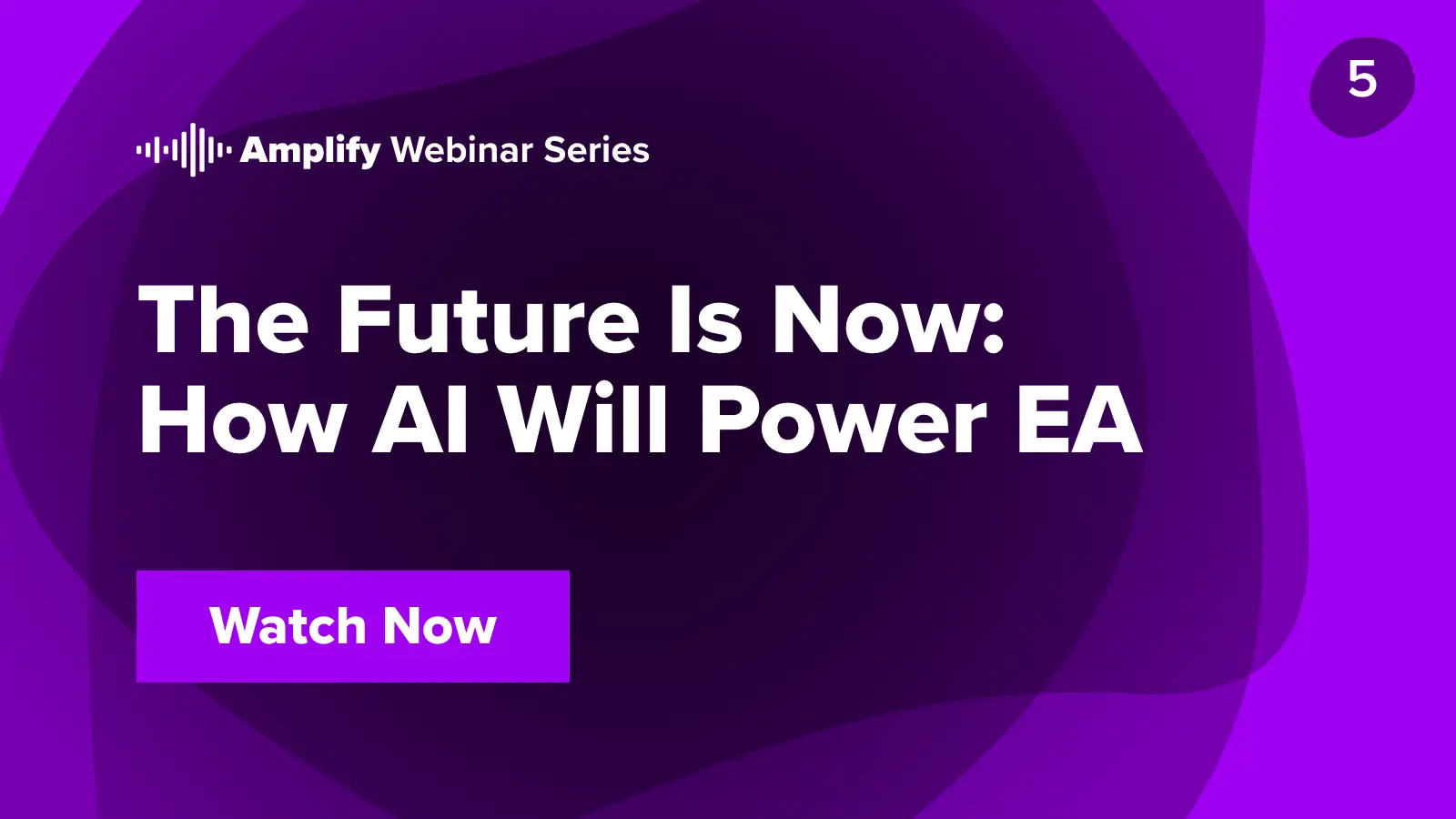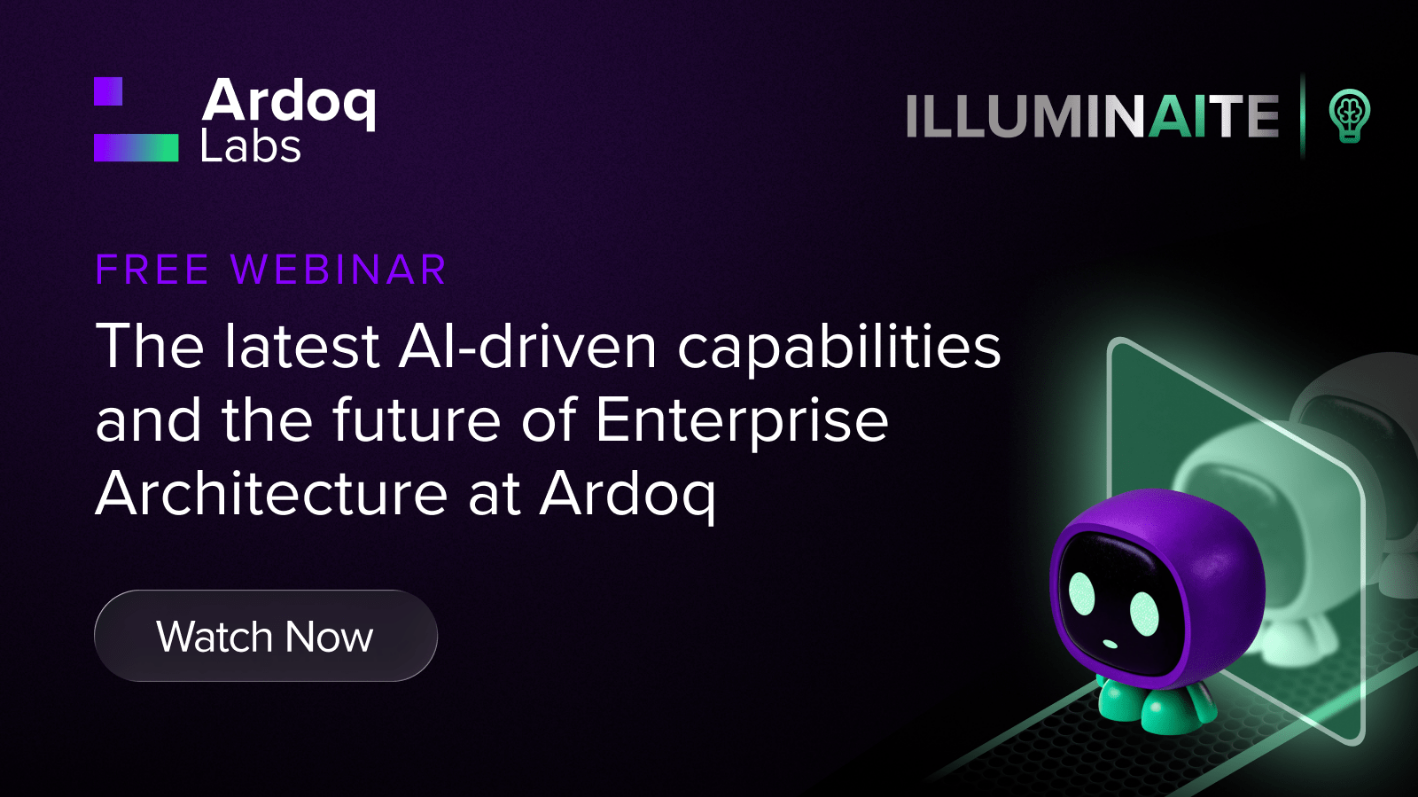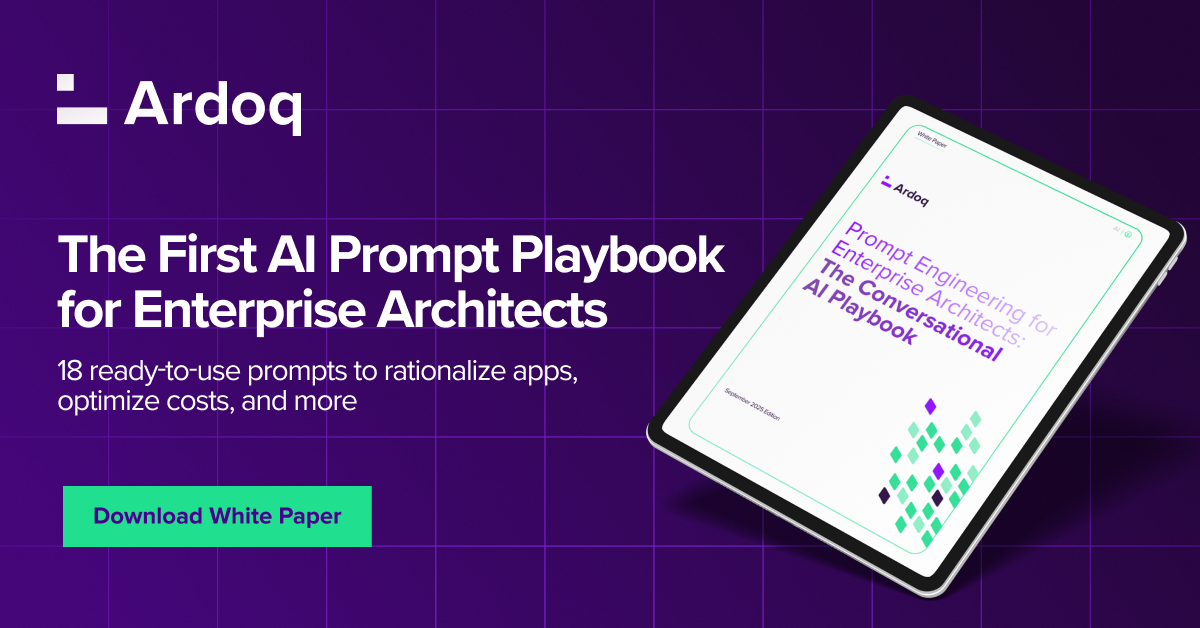Enterprise Architecture is a complex field, so navigating the multiple ways one can use an Enterprise Architecture tool can be overwhelming for those who don’t know where to start. This is where Artificial Intelligence can really shine. Artificial Intelligence-driven tech already makes our everyday lives as consumers smoother. As Forrester describes in “Predictions 2023: AI Will Become An Indispensable, Trusted Enterprise Coworker”, AI will become an integral part of digital transformation.
It becomes ever more important for Enterprise Architects in organizations to communicate value effectively in their digital transformation journeys, and Artificial Intelligence will show value instantaneously. Projects are then pushed ahead with speed. The ability to explain why something is important facilitates effective communication, persuasion, prioritization, motivation, and evaluation. It empowers individuals to convey their message clearly and influence others. Organizations can then make informed decisions, stay motivated, and continuously improve.
Democratizing Enterprise Architecture with Artificial Intelligence
When the value of a project or even a team is not understood, however, EA teams can struggle to get digital transformation projects off the ground. Coincidentally, AI can turn previous roadblocks in Enterprise Architecture into opportunities. Traditionally, there has been three main reasons why Enterprise Architects have struggled to involve the wider organization in data input and collaboration:
1. Technical Jargon
Enterprise Architects often use technical terms and jargon that are not familiar to stakeholders who are not from a technical background. This can make it difficult for others to understand the value that Enterprise Architects bring to the organization and ultimately prevents the widespread adoption of EA. People are more likely to support an idea if they understand the reasons behind it and the language used around it. By presenting a compelling case for the importance of collaboration, you increase the chances of gaining others' support, cooperation, or agreement.
2. Inability to Quantify Their Impact on Business Goals
Enterprise Architects may focus too much on technical aspects and overlook the importance of aligning their work with business goals. This can prevent understanding the value that EA adds. In addition, it could lead to a perception that their work is disconnected from the organization's overall strategy, making it challenging to communicate their value. Enterprise Architects may also struggle to align their work regarding tangible business outcomes. This can make it challenging for them to demonstrate the value they bring to the organization and can result in stakeholders viewing their work as an expense rather than an investment.
However, EA is vital to assessing decisions and strategy, allowing evaluation effectiveness and identifying areas for improvement. This reflective process helps refine approaches, make adjustments, and achieve better outcomes for the organization.
3. Modeling and Analyzing Complexities
The third struggle of Enterprise Architects in socializing EA is that the more complex a model is, the more unclear it becomes how Enterprise Architecture drives strategic decisions. However, only by understanding the contextual significance of various tasks, goals, or objectives can the business allocate resources more effectively and focus on what truly matters. EA teams avoid wasting time on less important matters and make informed decisions about where to invest their energy.

AI as a Copilot to Digital Transformation
Enterprise Architects can enhance their ability to communicate their value by utilizing visualization tools, data-driven insights, and predictive modeling. By engaging more people in an organization’s AI-driven digital transformation, more data is collected, and better strategies are created. Artificial Intelligence builds inferences for data input, so users don’t have to deal with the technical complexity of references.
AI Assistant: A Friendly Copilot to Mentor You Through the Labyrinth
New knowledge is extracted from previous knowledge. Since reasoning happens through logical inference, new relationships or new elements are made based on existing data. An inference engine, therefore, can turn a graph dataset into rules-based reasoning, which is especially welcome in tricky and complex environments where details are hard to see through the intricacy.
Compliance, for example, can be difficult to map out fully. Say you have an application with customer data that runs on Cloud Service A in Location A. However, due to GDPR compliance, it should actually run from Location B. Compliance guardrails made from an inference engine can help define the rules automatically.
Another example is simply having a complex application landscape with numerous integrations. A business audience might want to know where billing data is going. An inference engine can extract this information from the architecture and translate it into colloquial language. Architects can translate from technical language to plainer business terms based on inference principles.
Think of an AI assistant as a friendly copilot to mentor you through the labyrinth. Typically as an initiative goes through solution design, the solution architect starts to make design decisions. These decisions will subsequently need to be checked by a governance process. This process can slow the pace of solution development. So EA teams should aim to provide guidance by providing guardrails that allow initiatives to develop at a good pace without contradicting architectural principles.
Ardoq’s Inference Engine allows architects to build those guardrails directly into the solution definition process by checking the solution for compliance, alerting, and even dynamically re-drawing the solution architecture in real-time. Ardoq’s AI assistant, for example, can detect a violation of an enterprise security principle and show if customer data is being shared with OpenAI, which is deployed as a technical service on the public cloud.
Did you miss our online discussion about the future of AI in EA? You can watch the recording here: 
Semantic Search: Ask Questions Naturally
We all use semantic search daily, but the concept is still new to Enterprise Architecture. This search engine technology takes into account the context of a user's query to accurately deliver the results they are looking for. Semantic search looks at the meaning of words and phrases, rather than just the literal words themselves, to better understand the user's intent and provide more relevant results.
In the context of AI in digital transformation, certain factors will guide what aspects of semantic search are incorporated into graph technology, depending on the audience. For example, a user’s search intent is pivotal in the type of information provided. If the user who is searching is non-technical, the input will be different because they may use different terminology and be looking for very different insights compared to a highly technical user.
Semantic search has the potential to radically lower the bar for socializing and accessing valuable EA insights like no EA tool has managed to do in the past. Where EA teams would be gatekeepers of the past, needing to spend substantial time and effort to distill insights for other teams in the organization, semantic search will allow these teams to better self-serve the insights they need on demand. Faster access to insights means better decisions are made more quickly and reliably.
AI for Supercharging Digital Transformation
AI is important for Enterprise Architecture tools because it allows for more efficient analysis and decision-making. AI-powered EA tools can quickly analyze large amounts of data and identify patterns and relationships that help organizations to understand their business environment and make informed decisions. AI can also be used to automate certain processes, reduce the time spent on mundane tasks, and see the impact of changes on the EA environment, allowing for better predictions and planning.
When planning to incorporate AI as an assistant for your architecture, consider the following questions:
- How can AI automate repetitive tasks to allow focus on strategic design work?
- How can our organization integrate more people to get more data?
- How can AI help contributors input the right data?
- What are the challenges facing our CIO in our digital transformation?
Get a jumpstart on leveraging AI in your EA practice with our Prompt Playbook.
 Leah Plotz
With over ten years of experience working in content, Leah wants to make sure Ardoq empowers engagement and collaboration throughout an organization.
Leah Plotz
With over ten years of experience working in content, Leah wants to make sure Ardoq empowers engagement and collaboration throughout an organization.





/Logos/Ardoq/RGB_Ardoq_Logo_Stacked_White_Monochrome%201.png?width=80&height=77&name=RGB_Ardoq_Logo_Stacked_White_Monochrome%201.png)

